This year’s RideLondon was the fifth time the event that now bills itself as the world’s biggest weekend of cycling has taken place.
And as has become a tradition, here are my first thoughts – typed in the press centre, still in my bike gear – about the 100-mile event. As ever, feel free to disagree/add your own observations below.
Smaller is better
A lot of participants last year were critical of an event they believed had become too big. Always massively oversubscribed, the 2016 event had 27,000 entrants, more than ever before.
And it showed, even for those not caught up in the long delays caused by an air ambulance having to come to the aid of a rider who had crashed into a tree. It felt overly congested, and thus at times a bit hazardous.
This year, the numbers were reduced to 24,000, with an extra half hour added to the staggered start times, and for me it felt immediately better. Even the usual pinch point of Leith Hill seemed much more manageable (the traffic, that is, the hill is still horrible).
The 46-mile version of the event, now in its second year, increased from 2,500 to 4,000 people, and you did notice when the routes merged. But overall I was impressed.
The caveat to this is the fact I set off fairly early, at about 6.20am – was it the same later on in the course?
The safety message is getting through
Last year, I must have seen the aftermath of at least half a dozen crashes on the route. This year, I saw one (which looked fairly bad; all the best to the man in the recovery position under the silver foil blanket).
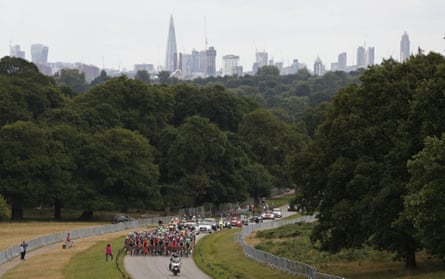
Hugh Brasher, the event organiser, says he has tried to foster a less speed-at-all-costs attitude on what is a very fast course, and get riders to, as he put it, “look out for each other”.
The reduced congestion played a part. But so too, perhaps, did the heavy PR message along these lines put out before the event.
There were also some “ride safety captains” in sponsored jerseys out on the course, supposedly to encourage good behaviour.
It’s hard to say how much impact these had, not least as there were only two per “wave” of starters, each hundreds in number. I chatted to one briefly along the route, and he cheerfully admitted he had no powers as such, but was just meant to help set a good example.
When I saw him, he spent some time amid a group including a man on a time trial bike – forbidden in the event – and didn’t say anything. So perhaps it’s not the toughest regime.
Gender balance has a long way to go
If, like me, you’re among the earlier starters on the RideLondon 100, it’s fair to say nothing you’d see would dispel the notion that road cycling is dominated by men, mainly middle aged and predominantly white.
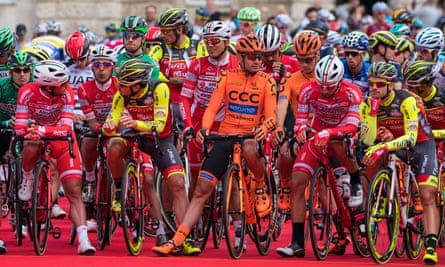
Brasher says the event this year had an 80%-20% male-to-female split, with a slightly better 65%-35% ratio for the 46-miler.
Why, some may ask, is this a problem? It is because RideLondon’s stated mission is to get more people physically active, and sedentary living can be an even bigger issue for women in Britain than men.
Brasher says he hopes it will change over time, noting that the first London Marathon, 36 years ago, was more than 95% male, “most of them stick thin distance runner types”.
All hail the mavericks
Another homogenising aspect of the RideLondon 100 is that, especially at the start end of the event, it’s a (probably to be expected) sea of Lycra and expensive road bikes.
So my cap is doffed to the man I saw pedalling an ancient racing bike dressed in baggy tracksuit trousers and a T-shirt (he did have the necessary rider numbers), and the man racing down Embankment on a Brompton.
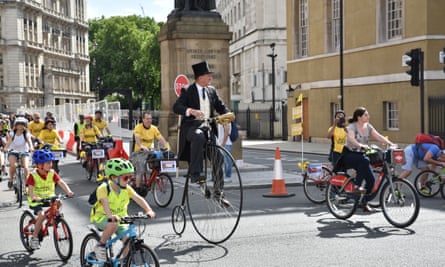
Back to the Lycra, I was impressed with some of the accessorising. One man on a gleaming black bike had matched his bright pink jersey with socks, mitts and water bottles of the same colour. This ensemble – and make no mistake, it was an ensemble – was pristine and unmarked, quite something after riding on wet roads.
London could end up falling behind other cities
Beyond RideLondon, the capital prides itself as the predominant big UK city for everyday cycling (places such as Oxford and Cambridge do better). But is this title in doubt?
Major progress in the final couple of years of Boris Johnson’s mayoralty, with the construction of the big east-west and north-south cycle “superhighways” among other projects, has stalled alarmingly under Johnson’s successor, Sadiq Khan.
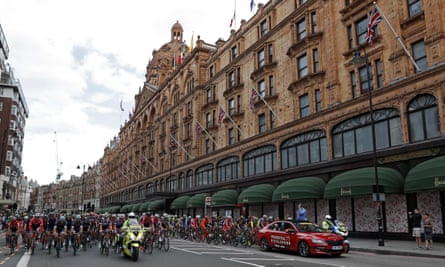
Khan promised to make London a byword for cycling, but has achieved depressingly little in his year-and-a-bit in office, a period mainly marked on cycling by endless consultation and delays.
And while London has the inbuilt advantage in tempting people on to two wheels by having a central congestion charge for cars and very slow roads, others may catch up.
Last week saw Andrew Gilligan, who achieved much as Johnson’s cycling tsar, charged by the National Infrastructure Commission with boosting cycling in Oxford, Cambridge and Milton Keynes.
More directly relevant to London was the news that the mayor of Greater Manchester, Andy Burnham, has appointed Chris Boardman as his cycling and walking commissioner.
Manchester has a long way to go, but if anyone can transform it, this will be Boardman, the former racer and Olympian who has become perhaps the UK’s most effective, eloquent and effective advocate for everyday cycling.
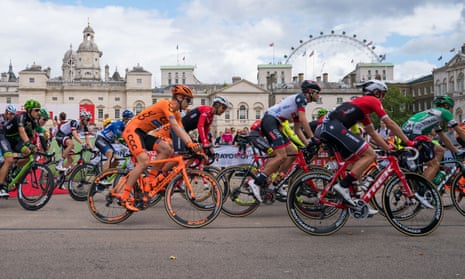








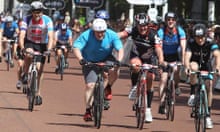
Comments (…)
Sign in or create your Guardian account to join the discussion